Nov 2 to Nov 8
Pawan Neyung recalls seeing his mother-in-law Mahung Mona weep every day over her lost family. When she got drunk, she often sang: “Why were you so cruel to leave me behind, leave me alone in this world? I don’t want to live at all, I want to follow you.”
Mahung Mona’s close relatives — including her parents, siblings, husband and children — all died during the Wushe Incident (霧社事件), the Sediq Tgadaya Aborigines’ desperate uprising against the Japanese rulers, which took place between October and December of 1930. She was 23 years old at the time, and her father was Mona Rudao, the immortalized leader of the rebellion. In the aftermath, Mahung became known as the “woman who washed her face with tears,” as she never got over what happened.
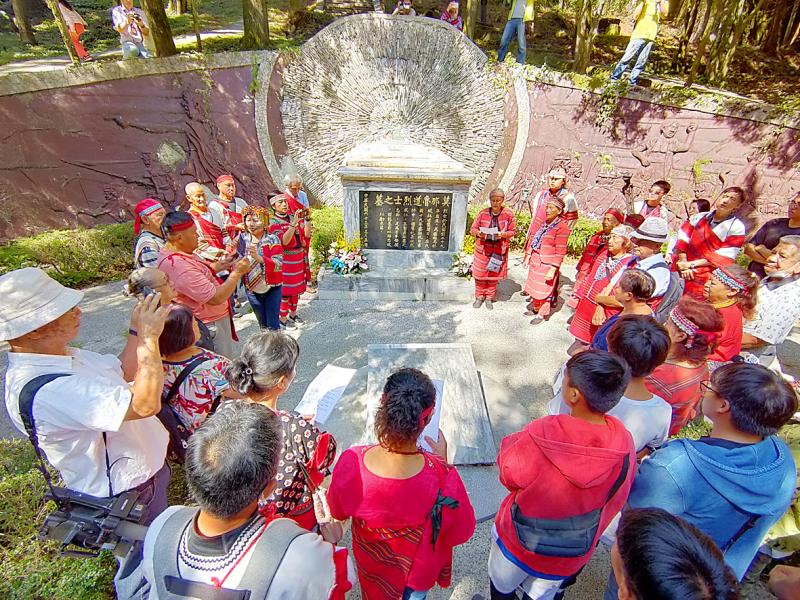
Photo: Tung Chen-kuo, Taipei Times
Near the end of the rebellion, Mahung and her husband Sapu Pawan chose death over Japanese retribution and tossed their young children off a cliff. Sapu then shot himself, while Mahung attempted to hang herself, but she was saved by villagers passing by on their way to surrender. They took her with them, and the Japanese healed her neck and forced her to persuade her brother, Tado Mona, to turn himself in. Tado refused and, along with four companions, committed suicide.
Mahung eventually remarried, but had no more biological children. In 1943, she adopted a granddaughter from another royal family, and named her Lubi Mahung so that her family lineage could continue. Lubi’s youngest daughter Bakan Pawan, current chairwoman of Taipei City’s Indigenous People’s Commission, wrote her master’s thesis on the fate of Mona Rudao’s descendants.
LIFE OF REGRET
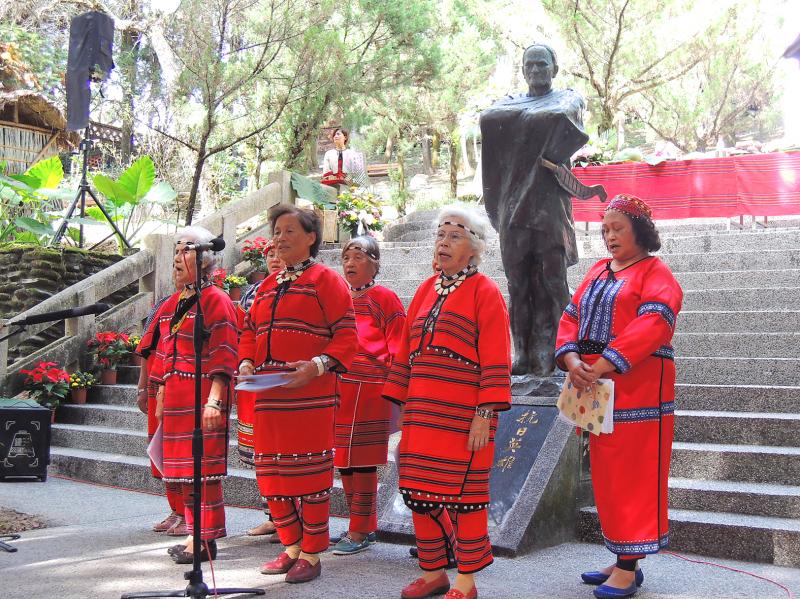
Photo: Tung Chen-kuo, Taipei Times
The rebellion effectively ended on Dec. 8, 1930 with Tado Mona’s suicide, but that wasn’t the last of the Sediq Tgadaya’s suffering. In April 1931, the Japanese persuaded the neighboring Sediq Toda to attack their brethren, leading to at least 200 more deaths among the already decimated population. Later that year, the Japanese arrested 23 more men, who were never seen again.
In May, the 298 survivors were forcefully relocated to Kawanakajima Village (Sediq name Gluban but better known today as Cingliu, 清流). Closely monitored, the Japanese sought to transform them into a “modern and civilized” rice farming community. Today the village is famous for its rice.
It’s unclear why Mahung did not have more children with her new husband, but at least one villager tells Bakan that the Japanese forced her to take oral contraceptives to end her family line so there wouldn’t be another Mona Rudao.
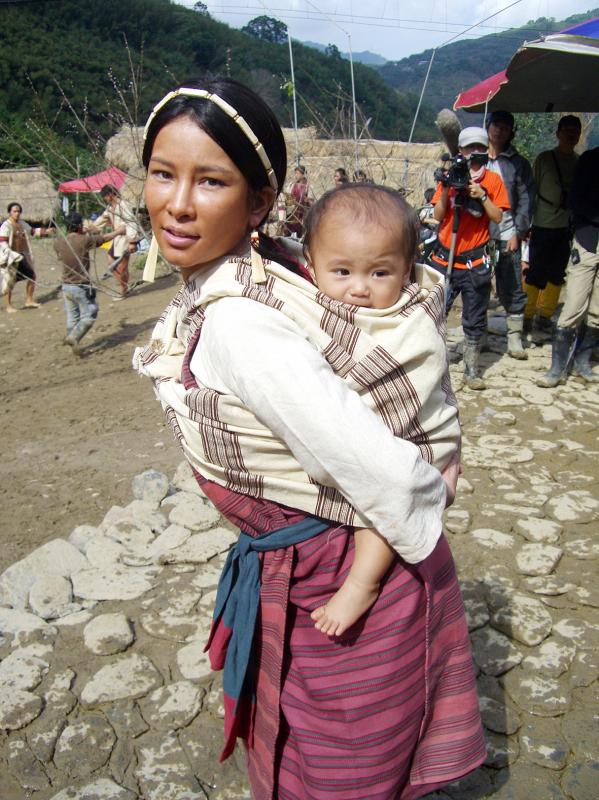
Photo courtesy of ARS Film Productions Co
Bakan writes that when Mahung began thinking of adopting a child, she insisted that it come from a chiefly family like hers. Lubi was just a few months old when Mahung adopted her from her childhood friend.
Lubi married Pawan Neyung in 1959. Mahung had Pawan marry into the family, and personally named and cared for their five children. Mahung named the eldest boy Mona Pawan after her father, and the youngest Bakan Pawan after her mother.
“She told me she missed her father, but missed her mother even more,” Lubi says.
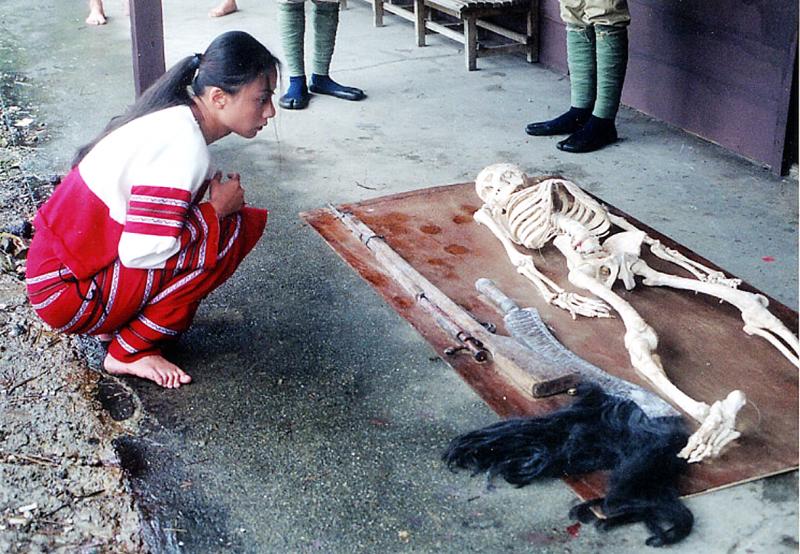
Photo courtesy of PTS
“She gave me the name Mona so I could carry on the family’s lineage,” Mona Pawan says, recalling that Mahung carried him on her back when visiting old friends.
“In Gluban, each family had suffered immense tragedy; the Wushe Incident was not just about Mona Rudao’s family,” Mona Pawan says. “When they spoke of the incident, they would lament and comfort each other and weep uncontrollably. They did this every single day.”
“Grandma Mahung was the one who lost the most from the incident. Her depression and sorrow only grew stronger, and she started drinking every day. Sometimes she got drunk and fell over with me still on her back; I remember that clearly.”
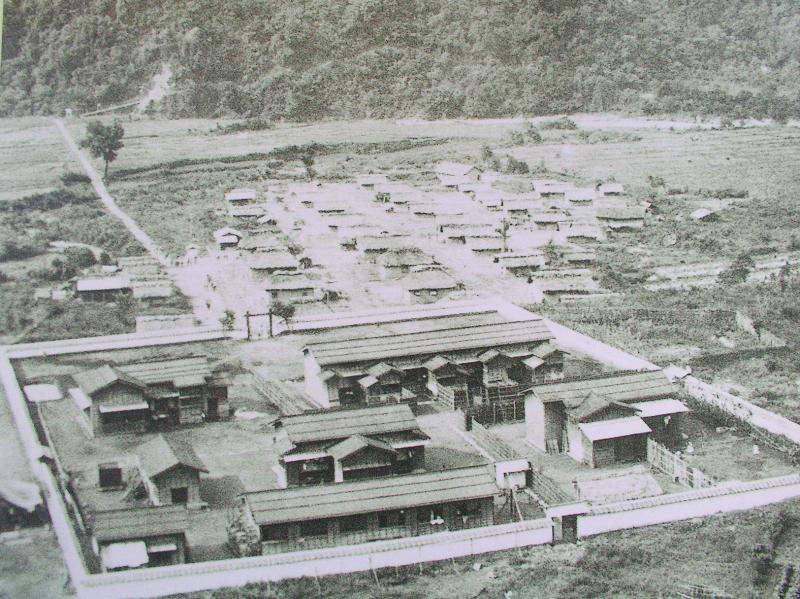
Photo: Chen Hsin-jen, Taipei Times
Lubi says Mahung attempted suicide twice, but failed both times.
FATHER’S BONES
One of Mahung’s biggest regrets was that she was never able to retrieve her father’s remains.
“I couldn’t get his bones back when I was alive, but even in death I will help you all search for it from the netherworld,” she told Pawan Neyung before she died.
At the end of the uprising, Mona Rudao separated himself from the group and shot himself in a cave so the Japanese wouldn’t find his remains. Locals found a skeleton and a gun high up in the mountains in June 1933, and the authorities asked Mahung and other members of surviving royal families to identify it. That was the last time Mahung saw her father.
In June 1934, the Taiwan Daily News reported that Mona Rudao’s body and belongings were on display at a commemorative exhibit for a construction project in nearby Puli, likely as a show of might. By the end of that month, the Japanese transported his remains to Taihoku Imperial University (today’s National Taiwan University, NTU), and continued to exhibit it on special occasions. It remained at NTU for the next 39 years.
“I lived with Mahung for 14 years, and whether it was night or day, she wouldn’t stop talking about her father’s remains,” Pawan Neyung recalls. “She cried to me every day about it, to the point where I was about to lose my mind. Sometimes I couldn’t stand it anymore and went to sleep in the yard instead.”
Mahung was certain that Mona Rudao’s body would return one day, and she cut off a tuft of hair and fingernail clippings to be buried with her father just in case she died first.
In the summer of 1973, three months after Mahung’s death, an NTU student surnamed Hsu (徐) visited Pawan Neyung and asked him detailed questions about Mona Rudao.
“I will take this case directly to the central government,” he recalls Hsu saying.
Several professors also petitioned the government, asking them to let this “anti-Japanese hero” be brought home and laid to rest. Mona Rudao was once seen as a vicious criminal, but under the Chinese Nationalist Party (KMT), he was a great man who was an essential part of the national narrative.
A few months later, the government finally returned the bones. On the 43rd anniversary of the Wushe Incident, Mona Rudao was finally given a proper burial — albeit in Han-Taiwanese style — with then-Taiwan Provincial Governor Hsieh Tung-min (謝東閔) presiding over the ceremony. The officials initially tried to inscribe the tomb with the Han-style name Mo Na-dao (莫那道), but they eventually relented after protests from the Sediq as well as academics.
Lubi placed Mahung’s fingernail clippings and hair into the coffin, finally fulfilling her wishes of reuniting with her family.
Two years ago, Lubi began frequently dreaming of Mona Rudao, who always said that he was feeling wet and cold. Last October, the township office sent someone to check on his grave — and to their astonishment they found a leak in the concrete structure. They fixed it immediately, and Lubi has not dreamed of her late grandfather since.
Taiwan in Time, a column about Taiwan’s history that is published every Sunday, spotlights important or interesting events around the nation that either have anniversaries this week or are tied to current events.

Oct. 27 to Nov. 2 Over a breakfast of soymilk and fried dough costing less than NT$400, seven officials and engineers agreed on a NT$400 million plan — unaware that it would mark the beginning of Taiwan’s semiconductor empire. It was a cold February morning in 1974. Gathered at the unassuming shop were Economics minister Sun Yun-hsuan (孫運璿), director-general of Transportation and Communications Kao Yu-shu (高玉樹), Industrial Technology Research Institute (ITRI) president Wang Chao-chen (王兆振), Telecommunications Laboratories director Kang Pao-huang (康寶煌), Executive Yuan secretary-general Fei Hua (費驊), director-general of Telecommunications Fang Hsien-chi (方賢齊) and Radio Corporation of America (RCA) Laboratories director Pan
The consensus on the Chinese Nationalist Party (KMT) chair race is that Cheng Li-wun (鄭麗文) ran a populist, ideological back-to-basics campaign and soundly defeated former Taipei mayor Hau Lung-bin (郝龍斌), the candidate backed by the big institutional players. Cheng tapped into a wave of popular enthusiasm within the KMT, while the institutional players’ get-out-the-vote abilities fell flat, suggesting their power has weakened significantly. Yet, a closer look at the race paints a more complicated picture, raising questions about some analysts’ conclusions, including my own. TURNOUT Here is a surprising statistic: Turnout was 130,678, or 39.46 percent of the 331,145 eligible party

The classic warmth of a good old-fashioned izakaya beckons you in, all cozy nooks and dark wood finishes, as tables order a third round and waiters sling tapas-sized bites and assorted — sometimes unidentifiable — skewered meats. But there’s a romantic hush about this Ximending (西門町) hotspot, with cocktails savored, plating elegant and never rushed and daters and diners lit by candlelight and chandelier. Each chair is mismatched and the assorted tables appear to be the fanciest picks from a nearby flea market. A naked sewing mannequin stands in a dimly lit corner, adorned with antique mirrors and draped foliage

The election of Cheng Li-wun (鄭麗文) as chair of the Chinese Nationalist Party (KMT) marked a triumphant return of pride in the “Chinese” in the party name. Cheng wants Taiwanese to be proud to call themselves Chinese again. The unambiguous winner was a return to the KMT ideology that formed in the early 2000s under then chairman Lien Chan (連戰) and president Ma Ying-jeou (馬英九) put into practice as far as he could, until ultimately thwarted by hundreds of thousands of protestors thronging the streets in what became known as the Sunflower movement in 2014. Cheng is an unambiguous Chinese ethnonationalist,